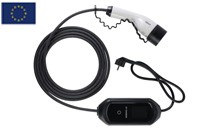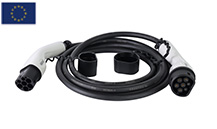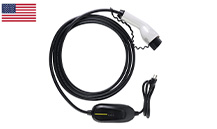Electric vehicles need to obtain energy from the grid for the car to run through the charging infrastructure, which is a medium for this purpose. Among them, EV charging cable is used for charging connection between EV and power source, as one of the important parts of EV conduction charging. With the development of charging technology, there are higher requirements for information transfer and charging between EVs and charging posts.
With the rise of the new energy industry, there are more and more manufacturers producing EV charging cables, but the quality of products on the market varies, and accidents such as spontaneous combustion of electric vehicles occur repeatedly, with unqualified product quality accounting for most of the reasons, and EV charging safety has long been a key concern in the industry. EV charging cable should have good heat resistance and aging resistance based on good insulation performance, and good low-smoke flame retardant characteristics in case of combustion to ensure that losses and injuries are minimized.
The structure of EV charging cable includes five parts: conductor, insulation, filling, wrapping and sheathing. the conductor used in FAFA-E cable is generally bare copper, which may be single-core or multi-core stranded. The material used for insulation and sheathing layer is more demanding. The principle of low smoke flame retardant cable is to add flame retardant material to the sheath material to protect the inner core and ensure the safety of the cable. Sheath materials need to meet good heat resistance, insulation, wear resistance, acid and alkali resistance, oil resistance and other properties, and combustion products to meet modern fire safety requirements.
In the selection and control of raw materials of products, FAFA-E fully understands the specifications, structure and performance characteristics of EV cables, makes reasonable selection according to the customer's use requirements, conducts strict control and inspection on the procurement of raw materials, resists bad materials, provides guarantee for the production of high quality products, and ensures the normal use of products.
In the production stage, FAFA-E pursues high quality products and all products are subject to a series of reliability tests before delivery. For example, electrical performance tests include: conductor resistance, sheath surface resistance, conductor continuity, insulation voltage resistance, etc.; insulation material performance tests include: tensile strength, elongation, air aging, thermal elongation and thermal shrinkage, ozone resistance, halogen, etc.; sheath material performance tests include: tensile strength, elongation, air aging, tear resistance, etc.; for the finished products are also tested for For the finished product, the test items include chemical liquid resistance, low temperature impact, extrusion resistance, single flame retardant, etc.
FAFA-E EV charging cable is temperature resistant from -40℃ to 90℃, and the product life is up to 10 years by thermal life extrapolation test, and is resistant to long-term aging of 3000 hours. The sheath is made of special material with tear strength >20N/mm, and all materials comply with RoHS and REACH environmental standards, which can meet the design requirements of customers' current-carrying capacity.






 简体中文
简体中文
